|
|||||||||||||||||||||
|
|||||||||||||||
|
Saint Agatha's reliquary is attributed to"Giovanni di Bartolo", a goldsmith from Siena who lived in the second half of the fourteenth century and it is a real and proper testimony of a Sicily depositary of political and symbolic values: Gold ,symbol of sacred and of power arrives and makes the jeweller's and the precious metals become the typical symbol of that period. An important element of reflection, therefore, becomes the inexsistence of barriers and frontiers between the art of goldsmiths and the other figurative arts, the figure of the goldsmith and of the sculptor lacks of barriers and frontiers so that it will give in the following Renaissance a generation of sculptors and painters that flourishes in the tuscan shops of jeweller's. The hieratic and frontal bust of Saint Agatha,in enamelled silver, lays on a magnificent pedestal and it's cut just under the waist. Two kneeling angels are beside it. The woman has a very rich mantle open on the front and adorned with vine shoots and with garlands of flowers partially enamelled. The cromatic effect is increased by the redness, once enamelled, on which a naturalistic colouring has been laid on it. A window with hinges allows a periodic inspection of the rests. The reliquary bust is at present hold up (sustained) by a sixteenth century base on which lays a octagonal pedestal enlarged on two sides by two little corbles. On this side the author has placed a long inscription in Gothic letters on a light blue enamel:
Virginis istud opus Agathae sub nomine coeptum / Martilias fuerat quo tempore praesul in Urbe / Cataniae cui pastor succesit Helias: / ambos lemovicum clare produxerat arbor / artificis manus hoc fabricabit Marte Foanne / Bartolus et genitor celebrit cui patria Sene / Mille ter et centum post partum Virginis almae / et decies septem sestoq. Fluntibus annis. Above this a series of eight translucid plates comment the historical phases of the reliquary: the weapons of the Aragons(that were reigning in that time in Sicily), of Catania, of the Pope, of two bishops purchasers and the images of Saint Catherine of "Alessandria" and of Saint "Lucia ". There are also two rectangular plates that represent the bishops "Marziale and Elia"that are kneeling as if they were praying the saint.The first ordered the statue and the second had it finished in 1376. |
|||||||||||||||
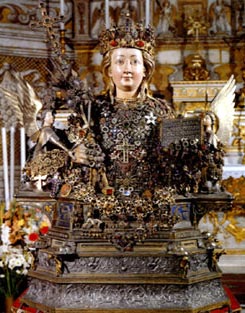 |
|||||||||||||||
|
|
|||||||||||||||
|
|
|||||||||||||||
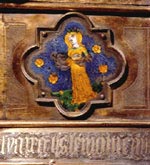 |
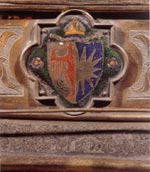 |
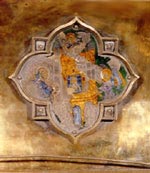 |
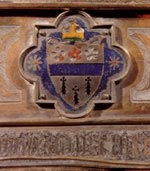 |
||||||||||||
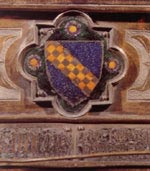 |
|||||||||||||||
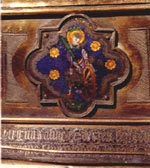 |
|||||||||||||||
|
The details of the figures in enamel show a luxurious effect that "Giovanni di Bartolo" reaches by joining together the painted enamel and the gems, a technique that is extraneous to the Sienese jeweller, where "Bartolo" came from, but it was present in the richest French production of the late fourteenth century, which the Tuscan goldsmith seems to follow.
|
|||||||||||||||